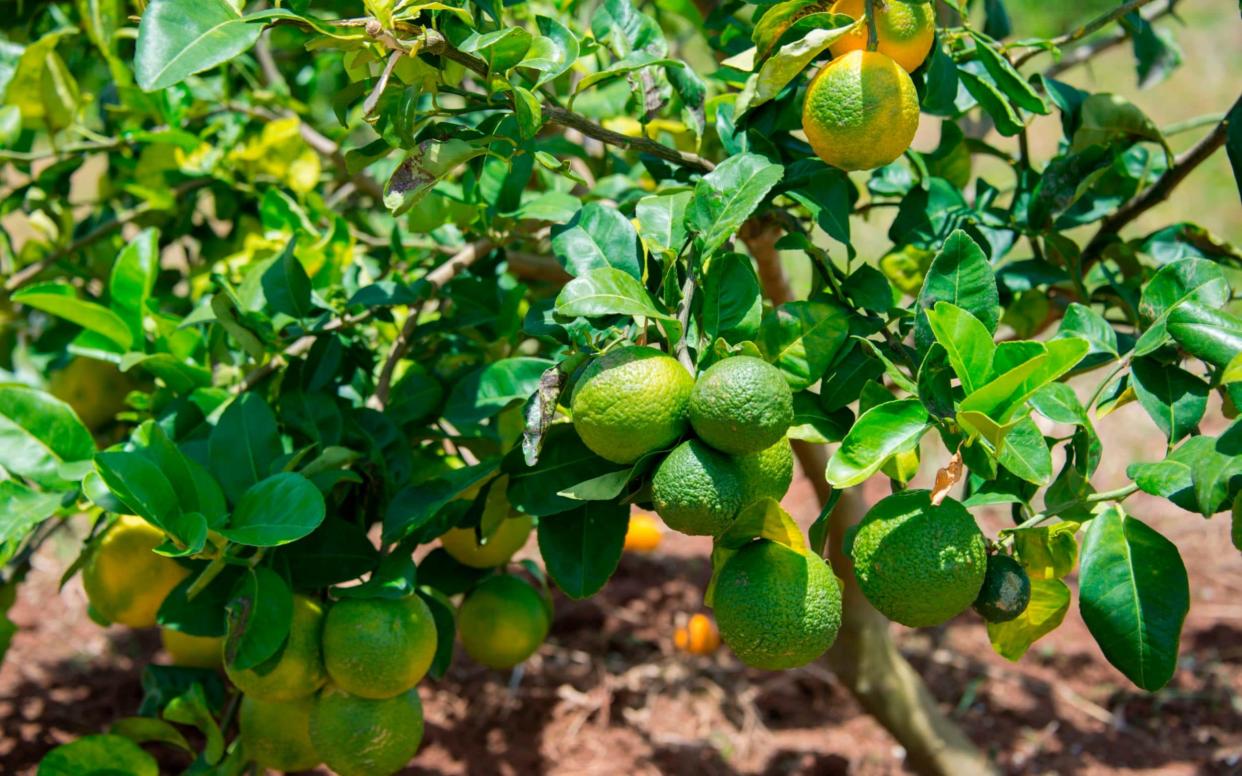European citrus crops threatened by devastating greening disease

A disease that has ravaged American citrus crops now threatens southern European countries including Spain, which produces much of the fruit imported into Britain.
French researchers have warned that citrus greening disease, known as “yellow dragon disease” in China, is likely to strike the Mediterranean next.
It has spread “with phenomenal speed and impact” since about 2005, according to Eric Imbert of the CIRAD agricultural research centre in Montpellier, in southern France.
A species of the African psyllid, a plant louse that can transmit the disease, has been detected in Spain and Portugal.
“The Mediterranean can’t remain untouched by citrus greening disease,” Mr Imbert said. “If we do nothing in terms of prevention, we could end up suffering a major catastrophe, with citrus prices doubling or tripling because of the loss of many crops.”
He drew parallels with Florida, where orange production plunged by 60 per cent between 2005 and last year. Costs soared and the wholesale price of concentrated orange juice more than doubled to about £1,800 per ton. “We are not immune to a phenomenon of similar magnitude in the Mediterranean citrus market,” Mr Imbert said.

The Mediterranean region produces more than a fifth of the world’s oranges, clementines and lemons, and it accounts for 70 per cent of world citrus exports. Spain is the UK’s largest source of oranges and other citrus fruit.
Britain imported £287 million worth of citrus fruit from the EU last year, including oranges, mandarins, lemons and limes, and £295 million worth from non-EU countries.
Mr Imbert warned that once lice carrying the disease reach southern Europe, it will be difficult to control them by spraying pesticides. “Their use will be limited because there are a lot of small farms surrounded by residential areas that could be affected.”
Citrus growers in Florida faced similar restrictions, but farmers in Brazil have relied on pesticides since their crops were hit. In California, producers chose the more expensive option of uprooting sick trees and replanting.
The disease is spread by lice jumping from tree to tree to feed on sap. They introduce bacteria that block the channels where sap flows, choking off the supply of nutrients. Leaves turn yellow, fruits are deformed and the trees eventually die.
On the French Caribbean islands of Guadeloupe, scientists suspected that infected seedlings were transmitting the disease and had seeds shipped in from Corsica. They were then grown in insect-proof greenhouses.
Yann Froelicher of the national agricultural research institute INRA said: “It was incredibly damaging as there were family-owned groves everywhere and everyone had an orange tree in their garden.”
A type of wasp that preys on the lice was also released, but the US National Academy of Sciences warned in a report published this month that there is no “miracle solution”.
Researchers are calling for increased funding to study the disease, which is difficult because the bacteria cannot be grown in laboratories.
For the time being, only Réunion, a French island in the Indian Ocean, appears to have found a way to keep the disease at bay: replanting at higher altitudes where the lice have not followed.

 Yahoo News
Yahoo News 
